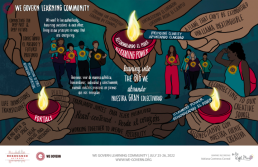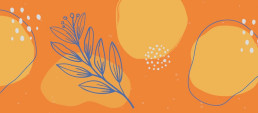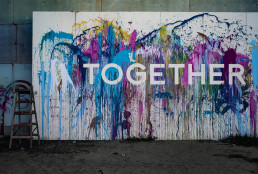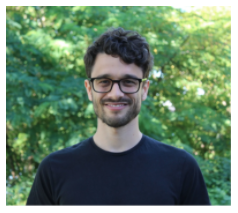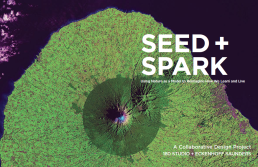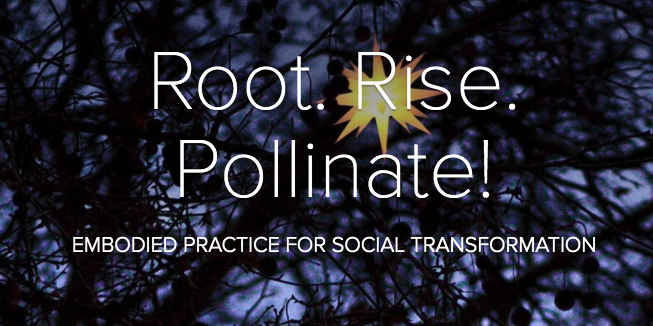MEASURING LOVE in the JOURNEY for JUSTICE
Below is the preface to this week's featured resource: Measuring Love in the Journey for Justice. Find the link to download this Brown paper at the end of this post.
MEASURING LOVE
Preface: A Sovereign Perspective
As this is a Brown—not white—Paper, we want to give some perspectives before you dig in. In a sovereign, self-determining perspective, we see Two Spirit people as sacred gifts. Children are treasured. Elders are respected and privileged. Womyn are beloved and respected and have power and voice. Fathers, sons, and boys are lifted up as the warriors, believers, and loyal friends that they are. Mothers, daughters, and girls are as valued as life itself, seen and treated as blessings. And all relations are sacred.
To be sovereign and free, our people need policies made of love, forgiveness, and connections.
As oppressed, exploited people of color in this work of social and racial justice, we have seen — and are seeing—children separated from their caregivers, caged in concentration camps. We are living in another era of the systemic denial of democratic civil rights. To be sovereign and free, our people need policies made of love, forgiveness, and connections. Our communities deserve health and educational equity; land and housing justice; economic independence; living wages (as in universal minimum income). Our people want restorative justice practices to replace punishment and lockup. Our communities want community organizing and advocacy, block by block. Our people need community controlled governance and accountability systems. We want civic leadership everywhere, as the right to vote goes with the rights to drive, assemble, drink, and travel.
This Brown Paper flips the script of what is acceptable as a “Paper” on its head. It is not a “formal,” research-based, finished product of the traditional type. It comes from the heart and is meant to be used—like love. It is meant to spark dialogue and provoke.
In it, we are asking ourselves, “Are we loving bravely enough?”
And “How much am I loving?” “What else I can do to be in community from a place of love?” and “How am I wielding power fused with love?”
These are the essential questions posed in our brown paper. We are excited to bring this out into the world to provoke, connect, and build with you.
We have so much to love. We love YOU because we know if you’re reading this paper, you know what it’s like to be powerless and not feel loved—and are working on bringing about more justice in the world.
We release our intentions into the universe. We want to know what your reactions are. We thank you for honoring us by your comments and discussion.
Spread your love. And, we know we are rising as one.

Download Measuring Love in the Journey for Justice HERE

Shiree Teng has worked in the social sector for 40+ years as a social and racial justice champion – as a front line organizer, network facilitator, capacity builder, grantmaker, and evaluator and learning partner. Shiree brings to her work a lifelong commitment to social change and a belief in the potential of groups of people coming together to create powerful solutions to entrenched social issues.
*After the Measuring Love Brown paper was released, Shiree's co-author was arrested on allegations of child molestation. She addresses this in a "Letter to Beloveds" - an excerpt from her next collaborative paper, Healing Love into Balance. (which will be highlighted at NW in the coming weeks.

Network Weaver is dedicated to offering free content to all – in support of equity, justice and transformation for all.
We appreciate your support!
donate in the box above or click here
What happened when we made space for harvest
As the pandemic(s) continue, and in the midst of the great resignation, global unrest, and the unfolding of the anthropocene, we are still here. Like so many of you, we are still working. Still worldbuilding.
And like so many of you, we’ve been doing this work alongside colleagues we haven’t hugged in years. Some of whom we’ve never even met in real life.
We’re doing our best to build connection and humanity through Zoom screens, phone calls, emails, and DMs. All the while, doing our best to support one another through the urgencies of life — elder care, child care, health emergencies, grief, and loss. And celebrating the beautiful moments too — life milestones, celebrations, small and big joys.
Last fall, our team members called for a season of harvest. An intentional period of reflection and beingness — being with one another and what we’ve learned over these last two years.
We knew that these learnings did not just exist in Google docs, meeting notes, and post-event surveys. What we’ve learned also lives in our bodies and in our collective memory. And needed space, time, and intention to surface.
And so we did. Our team set a number of objectives for this harvest: investing in the interpersonal relationships on our team with spaciousness and care; taking in the worldbuilding lessons and impacts we’ve been experiencing in our selves, communities, and systems; and in this process, building out a map of what is next for Resonance.
We have surfaced so much already — and the learnings are still coming, but these three are the most vivid in this moment:
1. Being with what’s real (instead of just pushing through)
In the fall of 2022, we began planning an in-person team gathering for October. After two years of being unable to be together in person, we painstakingly chose a location based on our team members’ care needs and travel abilities. We discussed COVID protocols and settled on a time, place, and flow that felt right to everyone. Several team members took the lead on developing an agenda that prioritized ease, joy, and togetherness–and also planning and visioning for the new year. (The kind of work that happens best in 3-D, with access to post-its and art supplies, dry erase boards and tea.)
We were so eager to gather.
Then, less than two weeks before our departure date, two of our team members had family medical emergencies. Caretaking responsibilities would likely prevent them from traveling. The agenda team re-convened. We adjusted the flow of activities, and with the consent of our team members, we decided to move ahead with gathering. Then another team member had a family emergency.
We adjusted once again, wanting to remain in the energy of what was possible. We explored ways to weave in team members as they were able. But one by one, life intervened until, days before we were meant to depart, only 3 of us were able to attend in person. And it became clear it was time to shift course.
And just like that, we found ourselves back on a Zoom screen. In some ways, the mutedness of online space felt even harder after the prospect of in-person connection.
But this whole experience was a vivid lesson in being with what is real. Every step of the way, we adjusted to meet ourselves where we were, and to be with what was possible in each moment. In the end, that meant shifting our plan entirely. And we were holding disappointment and grief at not being able to gather — but we also still had work to do.
And in the ensuing weeks and months, that work has taken shape — in small groups, and in a different flow than we’d planned, but it’s happening. Much of it online. Some of our team members are close enough to gather in person, so that happens sometimes too. We’re meeting each other where we are, and finding flow where we can.
2. Working with the seasons
Last year, the Resonance team embraced a rhythm of work and rest that parallelled the flow of the natural world. A way of being, once again, with what is real — the energy of the seasons — rather than the notions of capitalist production that invite us to sacrifice our wellness and connection for our work.
Above all, we remain committed to our individual and collective wholeness.
We know that rest is necessary to be in integrity with ourselves–and the world we’re building. And there just isn’t space for rest in the dominant worldview. But there’s something that feels right about taking a cue from the seasons.
Our bodies are already a part of nature; we are already feeling the energy shifts of the seasons. This has simply been a practice of honoring that. And what we’ve been reminded of in this practice is that — there are different kinds of work. And being in the flow of the seasons makes space for all of them.
The spring was bright and full of energy, activity, and programming. There was a buzz to that time that began to ease slightly into the summer and fall. And now, as the days shorten and winter draws in, it feels right to be slowing down. The earth (in the Northern Hemisphere where most of us are) is supporting us in that.
Colonial capitalism tells us that production is the only kind of work that matters. We know that’s not true. And giving ourselves space to feel into the other kinds has been a gift. This fall and winter has met us in a depth of reflection — individually and together — and investing time and care in relationship.
Trusting that we have everything we need is a practice of being with what we have, what is here — and trusting in the wisdom that lives in the moment, and everything that conspired to bring us to it.
Being in our harvest period this fall…felt right. Fall is a season of harvest. And our team was able to be together (albeit virtually), and harvest from the richness we’ve cultivated together over the last two years. (Metaphorically) making jam. And being in community.
This is a part of the work that requires space and intention. And will enrich what comes next.
3. We have everything we need
Our beloved co-director, Alexis Flanagan said these words on a staff call a few weeks ago, and they were met with silence as we all took a moment to receive them. In full transparency, this is a lesson not that we’ve learned, but rather one that we are learning and leaning into, individually and together.
Trusting that we have everything we need is a practice of being with what we have, what is here — and trusting in the wisdom that lives in the moment, and everything that conspired to bring us to it. It is a practice of looking within, rather than seeking ‘more’ outside of ourselves.
In a culture that says we can never have enough, trusting that we have what we need is a bold transforming of the scarcity and lack in capitalism and white supremacy.
It is a practice of trusting that we are enough.
At the end of the day, what else do we have but ourselves and each other?
We are enough.
What would it feel like to trust that you have everything you need?
originally published at The Reverb
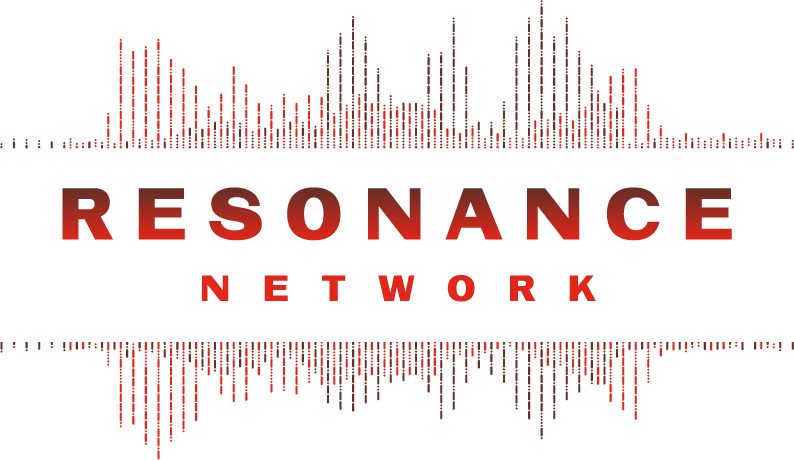
Resonance Network is a national network of people building a world beyond violence.

Network Weaver is dedicated to offering free content to all – in support of equity, justice and transformation for all.
We appreciate your support!
donate in the box above or click here
Reframing Power and Embracing What is Possible
Lighting the Candle of Liberatory Governance

As phase two of the WeGovern Learning Community winds to a close, participants gathered to reflect on their journey.
This community came together with a shared commitment to practice liberatory governance — and we did. Participants—including Resonance Network, who convened the learning community space but practiced as a participant team—reimagined what governance beyond dominant power structures could look like in our organizations, tribes, networks, and teams.
And what came through as we reflected on the experience was not only the transformations that took shape externally within these groups, but internally among participants as well.
Our choices add up to the world we’re building — and once you feel the power and possibility in choice making and community building from a place of liberation and care, you can’t turn back. We all felt that.
Our commitment to governance practice kindled a deeply felt sense of what is possible.
The process of embracing WeGovern—a set of governance principles rooted in mutual care, dignity, and thriving–in our own lives—helped each of us realize that we have more agency in the choices we make to live from our values than we realized.
Of course, the systems of control and domination we live within want us to believe that power exists outside of ourselves — but the opposite is true. Our choices add up to the world we’re building — and once you feel the power and possibility in choice making and community building from a place of liberation and care, you can’t turn back. We all felt that.
This practice became an affirmation that governance begins with each of us — in the choices we make each day to engage with ourselves, each other, our families, and our communities.
Bringing clarity
Each of us felt this sacred responsibility — an embodied knowing that developed in the practice. We described it as “a bell that can’t be un-rung” or similarly, “a flame that can’t be extinguished.” Once we felt that sense of agency in choice making — and began to witness the ripple effect of transformation in our communities — we couldn’t go back to business as usual.
But the future we are moving toward isn’t completely unknown to us — it lives in our lineage, in the memories of our ancestors, in the wisdom of the land that sustains us, and in the relationships we are building with one another.
Instead, we find ourselves choosing to move into the unknown — away from what has been familiar, and toward what feels whole. The future we are moving toward is unknown — it is unknown to the collective systems we live within that have shaped so much of our lives, profited from limiting our perceptions of possibility, and capitalized on dulling our sense of collective purpose. But the future we are moving toward isn’t completely unknown to us — it lives in our lineage, in the memories of our ancestors, in the wisdom of the land that sustains us, and in the relationships we are building with one another.
Reconnecting to spirit
The sacred responsibility of this way of worldbuilding, the connection to lineage and ancestral memory–bringing the wisdom of what was into what will become–is spirit work. It is work that requires tending to sustain it, but also sustains us. We seek spirit the same way sunflowers seek the sun.
We seek connection to spirit not just to ask for what we want, but to remind us of our humanity, our power, and our clarity in service to a higher purpose–a world where all beings can thrive. And that world is taking shape each day, in the relationships between us. If we are the candles that cannot be extinguished, our connection to spirit and purpose kindles the flame so that we can light other candles.
Claiming power
The flames we tend are a reminder of our power. The power that naturally comes from connection to source and purpose. The organic current of creative energy that flows when we’re in alignment with purpose and care. Despite the ways oppressive systems try to diminish our power, we are transforming ourselves, our communities, and our collective systems.
We claim our power when we see ourselves within the system–when we see and feel the way our agency, our choices can be used to change it. When our individual agency and power becomes collective. We claim our power when we refuse to be separate–from ourselves, from each other, and from the generations that came before and will come after us. When we accept the sacred responsibility of choosing the way we want to be, in alignment with the world we want to live in.
originally published at The Reverb

Resonance Network is a national network of people building a world beyond violence.

Network Weaver is dedicated to offering free content to all – in support of equity, justice and transformation for all.
We appreciate your support!
donate in the box above or click here
From Learning to Doing
Many years ago I was teaching high school English on a small island in SE Alaska. I asked the class to compare a piece of literature to the story of the Three Little Pigs. Half of the class couldn't do the assignment because they had never heard of the story of the Three Little Pigs. That changed me forever.
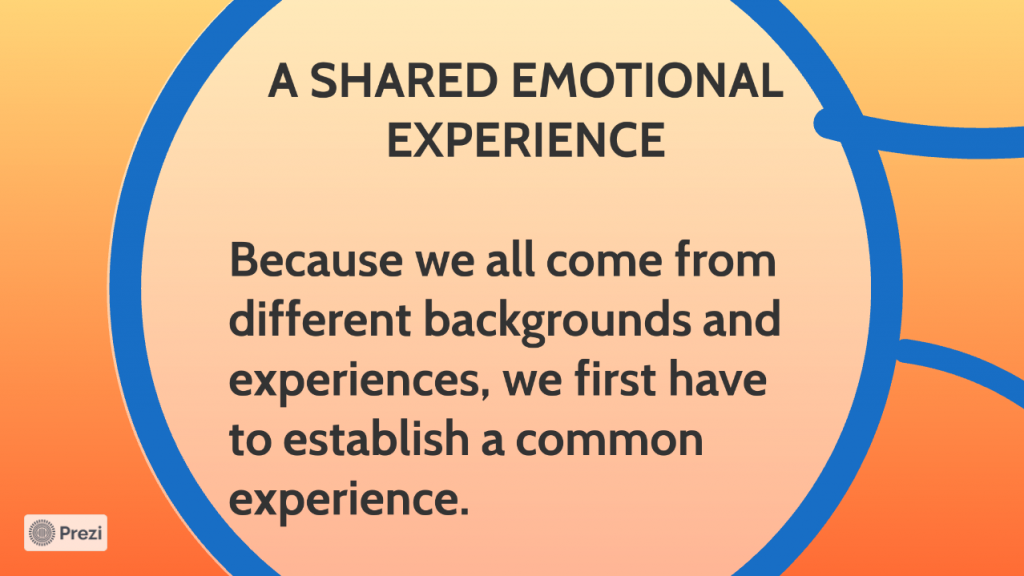
Without shared experiences, learning communities often talk past each other. Inevitably there is a judgement on one side or the other. Each learner brings his/her own experiences to a conversation and uses those unique experiences to make sense of things. Coming together as a learning community to sort through what we understood from something new that is introduced to us is sometimes very frustrating because of all the different experiences brought to the table. To help with that issue in almost any learning community, you can initiate a common experience/action for all participants. When an action is experienced together, suddenly there is more justice in the conversation. The playing field is leveled and the real conversation can begin.
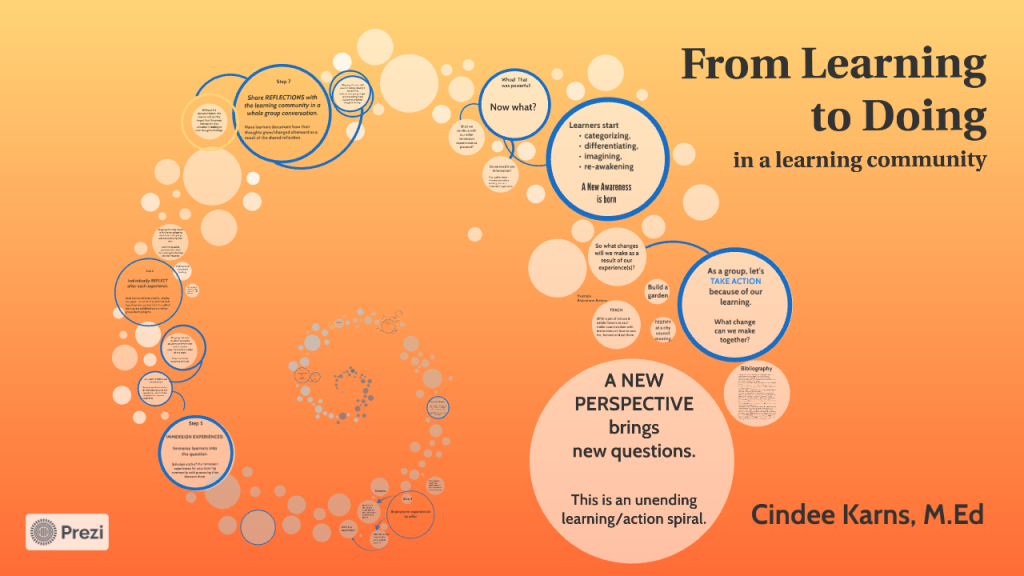
This is a depiction of how that process can be set up for any learning community. The condition is that the learning spiral never ends....every round goes higher, higher. The outcome is that participants almost always feel like they can act on their new knowledge and continue the learning cycle on their own.

Click HERE to access the "From Learning to Doing" resource. A slide presentation on how to create shared experience in a community to initiate actionable change.
Click HERE to access the slide show directly at prezi.com
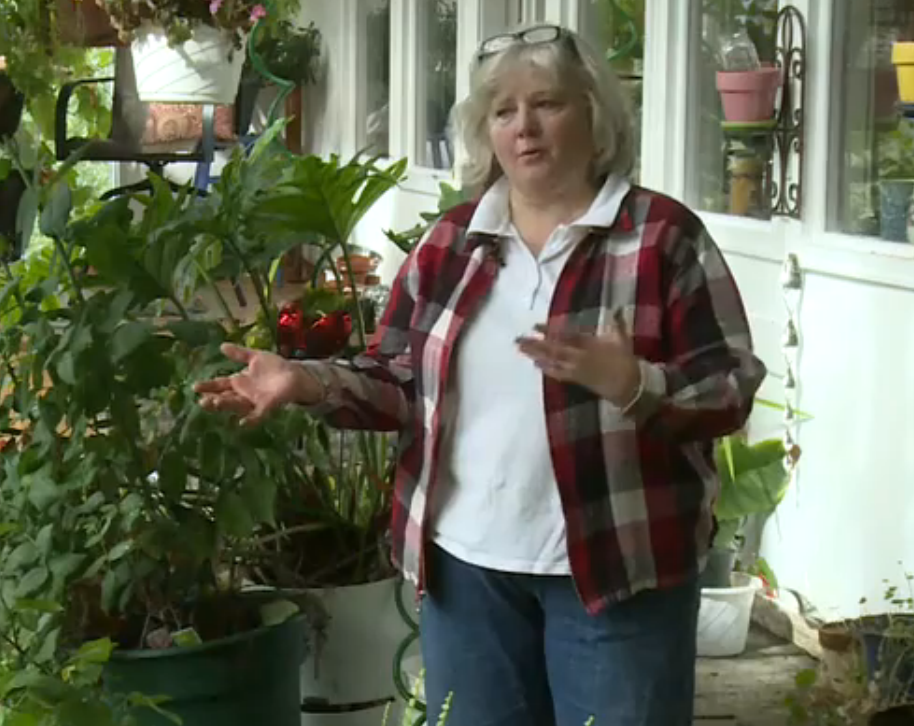
Cindee Karns, a life-long Alaskan, is a retired middle school teacher with a master's in Experiential Learning. She is founder/weaver of the Anchor Gardens Network, which is attempting to bring increased food security to Anchorage. She and her husband live in and steward Alaska's only Bioshelter
Appreciate Network Weaver's library of free offerings and resources?
Donate below or click here
thank you!
The Art of Measuring Change
What are your associations with words such as “measurement”, “evaluation” or “indicator”? For many people these words sound annoying at best, and there are good reasons for it. Yet - given the fact that you clicked on this article - it’s also very likely that you are motivated to contribute to social change, and the main intention of this article is to share about the beauty and collaborative power of attempting to measure it. What I am not doing is offering quick solutions, the same way art is not a solution to a problem. Rather, it is an invitation to step back, look at the nuanced process of change with curiosity and an inquisitive mind, and maybe discover something new. The article is also available as a dynamical systems map.
In a nutshell
There are two ways of reading this article:
- Exploration mode: Use the systems map provided above and use the visual representation to navigate through the article more flexibly.
- Focussed mode: Stay here and follow the flow of the article.
Here already a quick overview of the main points and arguments:
- There is a good reason to be skeptical of impact measurement. If the approach taken is too simplistic and/or mainly serves to validate a perspective (e.g. of the donor), it’s almost impossible to measure what truly matters. Rather, such an approach further perpetuates existing power imbalances and puts beneficiaries at risk. (section: The dangers of linearity)
- The measurement of social phenomena has to pay justice to the intricacies and complexities of a project, a program, or any given action. This requires understanding, which puts empathy, listening and collaboration at the centre of an empowering approach to measuring change. (section: About potluck dinners and “power with”)
- Meaningful indicators serve as building blocks in the attempt to capture social change. An indicator is meaningful when it not only follows the SMART principles, but is also systemic and relevant, shared (understood and supported by all stakeholders) and inclusive (aware of power relationships). (section: Indicators that matter)
- Complexity science can provide an alternative scientific paradigm to understand and make sense of our world and, hence, to measure change. (section: Coming back to complexity)
- It’s time to equally distribute power, namely the ability to influence and shape “the rules of the game”, or potentially even the kind of game that is being played in the first place. A crucial step towards this is describing and defining what desired social change is and how we go about measuring it in a collaborative way. (section: Synthesis)
The starting point
I have been working in the field of impact evaluation and measuring social change for around 6 years now. I’ve interviewed cocoa farmers in Ghana, developed surveys and frameworks, crunched Excel tables of different sizes and qualities, mapped indicators, and held workshops on tracking change in networks. Doing all of this is way more than a job to me. I have met wonderful people on this path, have been part of impactful projects and really had the feeling of being able to contribute in a meaningful way.
To me, impact evaluation is an ambitious, creative and collaborative application of complexity science (more on that later). It can be a deeply empowering process that reveals hidden opportunities and structural challenges, creating empathy between groups of people.
And it can be harmful.
The dangers of linearity
Let me share a definition with you to explain what I mean:
“An impact evaluation analyses the (positive or negative, intended or unintended) impact of a project, programme, or policy on the target population, and quantifies how large that impact is.”*
I agree with that definition in general, yet when it comes to the details in language, my opinion differs significantly. For example:
- Nobody is or should be a target. We don’t shoot projects, programs or policies at people, we work with people.
- Quantification plays a role, but we should also qualify impact.
- It is not said who has the power to define “positive or negative”, and “intended or unintended”.
These are not simply trivial semantic differences. All too often I experienced situations where impact evaluation was used by organisations to prove and validate the effectiveness of their services, rather than to truly understand the perception and consequences of what they offer.
Here is an example of what I mean: A couple of years back I had the opportunity to visit cocoa farmers in Ghana for an impact evaluation for an NGO. We found out that, yes, the NGO’s activities are actually having an effect and are contributing positively to farmers’ income. But we did not capture in writing the fact that most farmers stopped growing subsistence crops for their own consumption, hence making themselves more vulnerable to global trends and market prices. A few months after I left, the market price for cocoa dropped significantly. We did not capture it as it was not part of our evaluation framework or our mental model about what counts as relevant information.*
This is what happens all too frequently: We have pre-defined and pre-conceived notions of what counts as a data point, and what doesn’t. This again is usually based on a linear model of thinking (aka “A” leads to “B”), not accounting for the complexities and intricacies of human interaction and social systems. I have talked to so many people in the field that were frustrated, stating something along the lines of “we don’t measure what is truly relevant”.
To put it another way: If empathy and understanding are not at the centre of impact evaluation, both as the foundation and the goal, then it might be (unintentionally!) used against the people we want to benefit. It’s like having a knife in your hand. You can use it to prepare a delicious meal, but also to hurt yourself and others.
About potluck dinners and “power with”
Let’s dig a bit deeper into that: We’ve learned that what we do in impact evaluation is to assess the change attributed to an intervention (a project, program, workshop etc.). You do something and then something else happens. Now, we want to understand the “somethings” and how they are connected. This is not as simple a task as it may seem. Reasons include:
- We humans love to make our own meaning. You (and your organisation) probably know what the intervention is, but others perceive it fromtheir own perspective and life reality.
- Change is like air: Ever-present and hard to grasp. The “mechanics” of change can’t be pinned down easily and require us to look at context & conditions. Similarly, we know how difficult predictions are. Should we trust the weather forecast? For the next 3 to 5 days probably, but beyond that?
- There is power in the game: Oftentimes, multiple stakeholders and their multiple opinions are involved in an evaluation. There is nothing wrong with that per se, yet it is important to acknowledge.
The art of impact evaluation, therefore, is not to publish fancy reports, but to apply it in such a way that it deepens the internal understanding of issues at hand and strengthens the collaboration between actors. When this is the case, It builds empathy and human connection, and enables stakeholders to jointly develop shared meaning and scenarios for social change and transformation.
In other words, impact evaluation is based on and deepens listening. Listening not only to people, but to their context and to groups of people, to underlying and invisible challenges and hopes.*
In a more recent project I worked on we called all stakeholders together from the very beginning. It was clear who “has the money”, but we also shared the ambition to collaborate on a level playing field. As a consequence, we co-developed the project’s vision and the evaluation framework. We made clear that the first round of data collection also serves the purpose to understand what is relevant; and that the project goals will be further developed based on the “reality on the ground” rather than the content of the funders’ strategy paper.
We created the space for a genuine dialogue, and the data collected further strengthened the mutual understanding and trust in the group and in the process. It revealed both further challenges and where the leverage points are for creating systemic impact. It also became clear that power is not only linked to money.
“What makes power dangerous is how it’s used. Power over is driven by fear. Daring and transformative leaders share power with, empower people to, and inspire people to develop power within.” (Brené Brown)*
What we did was to ask a different question than normal. The central question was not “how can one central stakeholder prove their impact?”, but rather “how can we jointly contribute to desired change for a matter that we all care about?”. Shifting the question means that stakeholders and their individual contributions are valued differently, and that the quality of interaction changes.
Speaking in the metaphor of our delicious meal: We did not go into a restaurant where you tell somebody what should be cooked for you. Rather, we sent out the invitation to join a potluck dinner. Organising a dinner in this way does not happen at random. It requires clarity on roles and contributions, as well as shared agreements (e.g. on when and where to meet). The fundamental difference to a restaurant visit, though, is that it values participation and what each stakeholder (dinner guest) brings to the table, which in turn requires a mindset of being curious and open to surprises.
So far so good, but how do we actually measure change?
Jannik Kaiser is co-founder of Unity Effect, where he is leading the area of Systemic Impact. His desire to co-create systemic social change led him down the rabbit holes of complexity science, human sense-making (e.g. phenomenology), asking big questions (just ask “why” often enough…) and personal healing. Having worked in the NGO sector, academia and now social entrepreneurship
Originally published at Unity Effect
featured photo by Adi Goldstein on Unsplash
THE TAPESTRY: Weaving Life Stories
You are invited to listen to The Tapestry Podcast.

The podcast is about bringing people together to explore the rich, woven textures of our narratives. Our stories are impactful and in listening to the stories of others, we learn more about our own power, claim our purpose and pursue our passion. The fabric of our lives as women is strong, resilient and when we come together, we can make a beautiful piece of work to inspire, support and sustain our personal and professional lives. Although designed for women 50 and above, the wisdom shared is ageless. Join us as we share, laugh hysterically, cry, and keep it real all at the same time.
Some of The Tapestry's most recent episodes include:

THE STORIES BEHIND THE DATA - Meme Styles
In 2015, Meme Styles founded MEASURE to promote the use of evidence-based projects and tools to tell real-life stories behind the numbers. As a catalyst for systems change, MEASURE has grown to a fully operational nonprofit social enterprise that provides free data support to Powerful Black and Brown-led communities. So far the organization has provided over 3000 free data support hours to Black and Brown - led organizations.
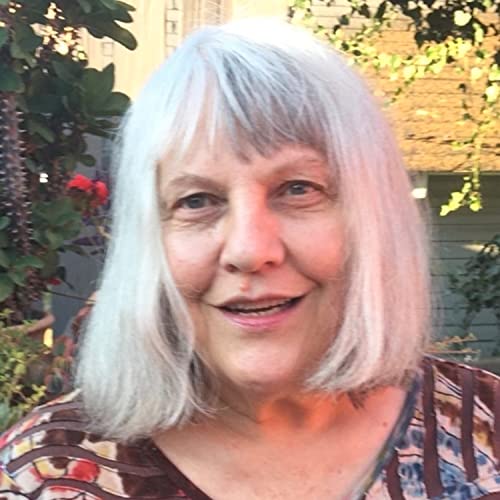
CREATING A PERSONAL NETWORK FOR TRANSFORMATION -- June Holley
June Holley has been weaving networks - and helping other learn to weave networks – for over 40 years. Much that she learned is included in The Network Weaver Handbook, 400 pages of simple activities and resources for Network Weavers. She also created www.dev.networkweaver.com, a site with many free resources and a blog authored by over 40 network weavers.

BOUNDARIES IN BUSINESS AND IN LIFE FOR 2022 - Kimberly Oneil
Kimberly O'Neil is an award-winning professor, executive leader, and social good expert. She was the youngest serving African American woman City Manager in the United States. As a veteran senior government and nonprofit executive, Kimberly has used her voice to impact policy decisions while lobbying in New York City and on Capitol Hill. She now works within the social sector and leads Giving Blueprint, a consulting company with a mission to impact social change through the development of strategic partnerships and growth plans within the social sector.
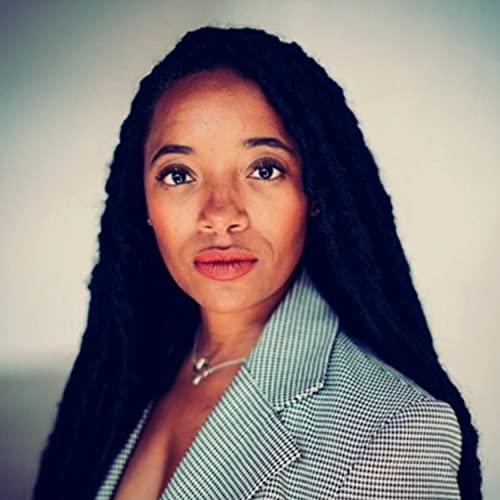
CRITICAL CONVERSATIONS ABOUT RACE - Amber Sims
Amber currently serves as the Executive Director of Young Leaders Strong City, a nonprofit focused on youth development, leadership, and racial equity. She was formerly the Director of Regional Impact for Leadership for Educational Equity, an educational nonprofit focused on leadership pathways in civic engagement. Previously, Amber led workforce development at Workforce Solutions Greater Dallas Opportunity Center. Her theory of change was to emphasize the connection between education, workforce, and dual generation impact.
Other guests have included:
- Dallas Maverick CEO and President Cynt Marshall
- Leah Frazier , 2-Time Emmy Award-Winning and 10-Time ADDY Award-Winning entrepreneur
- Paula Stone Williams, internationally known speaker on issues of gender equity, LGBTQ advocacy, and religious tolerance
- Rafia Zakaria, author of Against White Feminism (W.W. Norton, 2021) and Veil (Bloomsbury, 2017) and a writer for the Guardian, Boston Review, The New Republic, The New York Times Book Review and Al Jazeera America
- Gretchen Bauer, Luxury handbag manufacturer
Find all The Tapestry episodes HERE
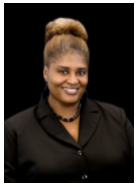
Dr. Froswa’ Booker-Drew is a Partnership Broker. Relational Leadership Junkie. Connector. Author/Speaker/Trainer. Co-Founder, HERitage Giving Circle. Currently, the Vice President of Community Affairs of the State Fair of Texas, she has been quoted and profiled in Forbes, Ozy, Bustle, Huffington Post and other media outlets around the world. In addition, she has been asked to speak on a variety of topics such as social capital and networking, leadership, diversity, and community development to national and international audiences. This included serving as a workshop presenter at the United Nations in 2013 on the Access to Power.
featured image found HERE

Network Weaver is dedicated to offering free content to all – in support of equity, justice and transformation for all.
We appreciate your support!
donate in the box above or click here
Social Change Networks Playbook
The challenges that the world faces today, from climate change to highly unequal economic and social structures cannot be solved by one organisation, government or institution alone. We need to collaborate to share learnings, scale innovations and build our collective capacity to bring about social impact.
The social change networks playbook is the product of a participatory learning journey that we as a group of network practitioners, funders and researchers went on together. Together, we made sense of some of the key questions, challenges and opportunities of impact networks, as well as good practices in facilitating and funding networks. This playbook is our humble contribution to share the learnings that emerged from our journey and support fellow practitioners and funders who develop networks for social impact.
We see these networks as groups of individuals and organizations that harness their connections and relationships towards a shared purpose, to learn together and collaborate to achieve a positive impact on a complex societal or ecological challenge.
There is a rich and growing body of both lived experience and research showing that collaboration through networks can enable learning, cultivate awareness, pool resources and widen access to opportunities. Impact networks can be critical to bringing about systems change across sectors, whether this is in education, youth development, gender equality or philanthropy. However, there are still many questions about how networks can become more thriving, adaptable and resilient:
- How do we most effectively take networks from talk to action?
- How do we convey the value of networks?
- How can we better democratise access to networks?
- What are good practices to build networks?
- How can networks drive systems change?
- How do we know when networks are working?
Through this playbook, we begin to share ideas and frameworks to start addressing some of these questions. The playbook is:
- A Practical Guide that is recognizable, useful and immediately applicable.
- A Curated Overview of resources and methods to support deeper learning.
- An Honest Invitation to experiment with collaboration and alignment.
In each chapter we invite you to use the resources and findings we share to reflect, learn and build strong networks in your contexts We acknowledge that we merely scratch the surface of these questions in this playbook. The more we learned throughout our journey, the more questions arose. We, therefore, invite you to also engage deeply with the reflective questions and additional resources.
Here is an overview on the chapters on different puzzle pieces that are important to consider when developing social change networks:
And, here is what other network weavers, facilitators and capacity builders said:
"The playbook is a valuable resource for network leaders and practitioners. Anyone working to create change through collaboration will be well served by reflecting on the questions and exploring the wealth of resources contained within. ” - David Ehrlichman
"Helpful and practical! This playbook is a great reference for practitioners or anyone who wants to learn how to better understand networks for impact and how to develop them. Anyone working with and “developing social impact networks should have this by their side!” - Kerry Lea Forrester, Lecturer on networks at Tilburg University
“Insightful and reflective of the dynamism of impact networks, the playbook offers clear and accessible guidance for network practitioners and funders alike, using a rich variety of real-world examples and resources. Recommended for stakeholders at any stage of their impact network evolution.” - Gwen Beeman – Small Foundation
CLICK HERE to download a PDF of Social Change Networks Playbook.
We hope you will find it as useful in your own work to co-create thriving networks. It is our collective intention and sincere hope that this playbook contributes to our collective ability to realize a more flourishing world for all.
In connection,
The network learning journey cohort, InHive & the project team.
inHive works closely with partners to develop networks that enable communities to leverage existing resources and amplify impact on their local and global communities. We work with partners from around the world – from school networks in Pakistan, to youth leadership programmes across Africa, to global funders – to build skills and expertise, design network structures, and facilitate participatory methods and collaborative activities for shared engagement, learning, and impact.
Seed + Spark
Sam Chaltain produced the wonderful book Seed + Spark as part of a collaboration between 180 STUDIO and ECKENHOFF SAUNDERS. This is a gorgeous and magical tour, one that I encourage you to explore. I found so much new information here and found the many stories they included to illustrate each chapter’s theme inspiring and insightful.
Sam is offering the book to us at no cost in pdf format, but you may want to splurge on a paper copy - it’s that wonderful!





The Table of Contents reveals the breadth of topics covered:
The authors’ preface outlines the path they will take:
You can download the pdf of the book HERE.
THE WORLD IS CHANGING. WHAT IS IT SHIFTING FROM, AND TO? 180 IS A GLOBAL DESIGN STUDIO DEDICATED TO EXPLORING THIS QUESTION.
We design human-centered environments and curate stories that advance our understanding of the future of learning -- and, by extension, the future of humanity.
Eckenhoff Saunders is a Chicago-based, architecture, planning and interior design firm. Our work is defined by innovative problem solving, client-centered service, technical expertise and pragmatic experience.
We collaborate with diverse organizations in the healthcare, educational, hospitality, non-profit, commercial, financial and industrial markets to develop meaningful design solutions that enhance the lives of those who experience our buildings.
Intergenerational Practice and Space
This week, Network Weaver is excited to share a 3-part series by Root. Rise. Pollinate! on fostering connection in virtual space. The series was originally published earlier this year at The Reverb.
How we can create beautiful connections and discoveries across generations.
Posts one and two of this series focused on setting virtual space and intentionally cultivating and sustaining the kind of energy required to be in non-physical space together. In this final post of the series, we center the “who” — the mix of people to invite into and be in space with, especially in light of the isolation that’s come with observing COVID-19 physical distancing safety measures. Here we lift up the beauty, imperative for, and power of intergenerational space.
What’s Possible When Young, Middling, and Elders Come Together?
Dominant narratives (including in organizing) often pit young versus old against each other, and render elders as spent, disposable, or out of touch. Our movements too often sideline both younger and older generations, and seldom do we meet. Yet many of us who’ve sat down for conversation or play with elders or those who are younger than us, including babies, know and relish the beautiful connections and discoveries that we can experience in encounters across generations.
We, present day dwellers of Mother Earth are here because of, and through our ancestors, just as some day our descendants will be here because of and through us.
We learn from and listen to messages from the past in order to seed the future, and we too must draw on and commune with all of us — young, old, and in-between — both human and non-human beings.
As you design your virtual space and identify different community members to share breath, ritual, and movement practices, pay attention to the mix, in terms of age, of who gets to hold space. You could pair the youngest and oldest members of your community to share old or new practices that they create together. Or perhaps you could have an intergenerational mix of people in breakout rooms together for intimate conversations and mutual learning. Importantly for learning and deepening relationship, make space for the virtual community to then share what they have heard from each other, what challenged them, what they are grateful for, and what they would like to cultivate and take beyond the virtual space with them. And remember to invite community members to acknowledge, express appreciations, and create opportunities to continue to connect with each other beyond the virtual space.
These physically distanced times have created an opportunity for us to cultivate and create sacred intergenerational relationships that we rarely get in organizing and “movement” spaces.
As we close out this series of posts, we also share with you the power and connection that comes out of being intentional in how you close your virtual space. The beginning is just as important as the end as the end is in fact another new beginning.
Just as we invited you to open and arrive with ritual and breath practice, we invite you to have in place ways in which you bring your space to close. Options include:
- Inviting community members to share short reflections, gratitude, a song, or a poem
- Physically replicate hugging and sharing an embrace with each other
- Rubbing your hands together to generate heat and move energy, then sharing that out by holding your palms out to community members on the other side of the screen, and then receiving the heat and energy to hug ourselves
We hope you enjoyed this series and would love to hear about other rituals, breath, and movement practices that you’re trying out or have found particularly potent in your own virtual gatherings.
Read post 1 HERE and post 2 HERE
Originally published April 16, 2021 at The Reverb.
Root, Rise, Pollinate! is an experiment that aims to catalyze and nurture a transnational community of feminist human rights advancers, organizers and movement builders using embodied practice for social transformation.
PLEASE DONATE to help Network Weaver continue in it’s mission to offer free support and resources to networks worldwide.
Embodied Practice
This week, Network Weaver is excited to share a 3-part series by Root. Rise. Pollinate! on fostering connection in virtual space. The series was originally published earlier this year at The Reverb.
How to bring movement practice into virtual space to foster connection with our bodies’ wisdom
In our first post we shared the importance of breath practice and ritual for deep connection in virtual space and offered rituals grounded in the elements of air, water, and fire. As we share the next practice on embodiment, we’d like to invite you to consider how all elements, air, water, fire, and earth live within each of us.
How do we embody each element at different times including times of upheaval and possibility for interdependence, deep connection, and love in a rapidly changing world like now?
Embodying The Change We Seek
Movement requires movement. The simple truth of this statement is particularly important during these times of physical separation, especially when we sequester ourselves in our homes and lie or sit in one position for long periods of time. Perhaps we are in front of screens for work or to indulge in whatever’s on offer from the multitude of streaming services that keep popping up.
While this time of COVID-19 is a particular point in our lives, around the world, over time, many of our people have become disembodied as a result of the privilege given to intellectual knowledge and grind culture over more holistic ways of knowing and being. This has led to individual and collective burnout, and even trauma. Even changemakers now ground much of our work in logic models, pages upon pages of strategy, theory, and deep analysis. We lead with our heads, not our hearts and bodies, even though we often already know in our bodies what is most important. In leading with our heads, we lose touch with our bodies sometimes to the point of breakdown and exhaustion.
When we are disembodied, it can be hard for us to tap into what the change we seek would feel like.
If we are disconnected from our bodies, how do we know how and where feelings of joy and inspiration show up in our bodies?
How do we tap into the inner wisdom that tells us when we need to pivot into something more life-giving and sustainable? How well do we connect to the hearts, minds and bodies of ourselves and fellow beings?
Therein lies the importance of body-based work so that as we reconnect with and listen to our bodies, we can draw on and be one with the delicate balance of earth, water, air, and fire that lives within us and is required for the liberated, sustainable, and thriving world that so many of us work tirelessly for.
So how might you bring movement practice into virtual space to foster connection?
You can draw on and invite your community members to share practices that they already know and engage in like somatics, tai ji, and yoga. As you practice, be sure to move with your breath, being conscious about the physical actions you take with each inhale and exhale.
Ultimately, starting virtual gatherings with practices — like (breathing through) movement — can help bring everyone’s bodies, minds, and spirits into alignment, enabling deeper conversations. Starting with and in our bodies allows us to be more present with each other and experience a sense of intimacy, even across distance, time, and experience.
An Invitation
Consider this: how might physical movement coupled with breath support you and your connection to those you care about? Who might you invite to practice with you? Next time we’ll touch on the practice and importance of fostering intergenerational space.
Thank you for continuing to journey with us.
Read post 1 HERE and post 3 HERE.
Originally published March 11, 2021 at The Reverb.
Root, Rise, Pollinate! is an experiment that aims to catalyze and nurture a transnational community of feminist human rights advancers, organizers and movement builders using embodied practice for social transformation.
PLEASE DONATE to help Network Weaver continue in it’s mission to offer free support and resources to networks worldwide.


